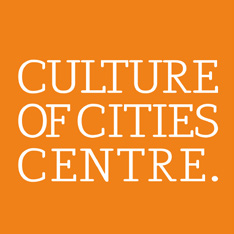BOOK SERIES
Culture of Cities
Series editors: Kieran Bonner and Will Straw
Cities have long been a key focus of innovative work in the humanities and social sciences. In recent years, the city has assumed new importance for scholars working on cultural issues across a wide range of disciplines. Sociologists, anthropologists, media specialists, and scholars of literature, art, and cinema have come to emphasize the distinctly urban character of many of their objects of study. Those who study processes of globalization are drawn to analyzing cities as the places in which these processes are most deeply felt or where they are most strongly resisted. The Culture of Cities series has its roots in an international research project of the same name, funded by the Social Sciences and Humanities Research Council of Canada during the period 2000-05. The series includes books based in the work of that project as well as other volumes that reflect the project’s spirit of interdisciplinary inquiry. Case studies, comparative analyses, and theoretical accounts of city life offer tools and insights for understanding urban cultures as they confront the forces acting upon them in the contemporary world. The Culture of Cities series is aimed at scholars and interested readers from a wide variety of backgrounds.
Culture, Disease, and Well-Being: The Grey Zone of Health and Illness
Series editor: Alan Blum
The series, Culture, Disease, and Well-Being: The Grey Zone of Health and Illness, represents the work of a multidisciplinary project in Medical Humanities funded by the Canadian Institutes of Health Research (CIHR) and based in downtown Toronto at the Culture of Cities Centre which is supported by the Faculty of Arts, University of Waterloo. The Grey Zone project develops a framework for studying health and illness by isolating a range of case studies in which the tension between medicine’s promise and its particular interpretations and incorporations become visible and dramatic under conditions of modern life. The idea of the Grey Zone identifies the ways in which indeterminacy, uncertainty, and ambiguity inhabit our interpretations and actions even when they are most resolute and appear most unassailable. The Grey Zone does not make reference to conspiracy or domination but to the natural working of language as a living social relationship between words and deeds where we must invariably speak and act under “imperfect” conditions. Though this zone of ambiguity might often appear terrifying in health care because of the import and urgency of problems involved, it operates whenever we strive to make sense of our situations. Works in the Grey Zone series use resources from classical theorizing, the humanities and social sciences that bear upon the interdisciplinary study of interpretive instabilities, their grounds and effects, in relation to the negotiation of problems of health, illness, and disease in everyday life. Publications in the series include a monograph by Alan Blum, The Grey Zone of Health and Illness, Stanley Raffel, The Method of Metaphor and two collections of essays,Spectacular Death: Interdisciplinary Perspectives on Mortality and (Un)representability edited by Tristanne Connolly, and Of Indeterminate Birth: Studies in the Culture of Origins, Fertility and Creation, edited by Elke Grenzer and Jan Plecash (Forthcoming).
Series ISSN: 2042-177X
Electronic ISSN: 2042-1788
Urbanities
Series Editor: Alan Blum
This new book series continues interdisciplinary research and theorizing inaugurated by the Culture of Cities Centre in Toronto and its projects on the arts, material culture, and everyday life in cities.
We are now accepting manuscripts that focus upon investigations of the urbane as a regime of thinking, feeling, and action. Urban centrality has always functioned as a lure for those seeking to be near the seat of action and sensuality in any civilization, giving the city the aura of the contemporary, creating the spell of the experience of the mode and the moment, inducing any and all to address what it is to be attuned in any present.
The coexistence of participation and detachment as a sensual encounter in the midst of change that distinguishes urbanity as a means of self fashioning in any present, invites the systematic reinvention of ideas and conduct in the marketplace of influences, including styles and scenes in consumption, fashion, arts and information, knowledge and technology, and regimes of care for self and other.
The social practices of urbanity are observable in the arts and sciences, aesthetically, ethically, and politically, in the organization of public and private settings of everyday life, in the various projects, enterprises and initiatives that mark the institutional landscape of the contemporary in ways appealing to the authority and code of urbanity and to being up-to-date, and in the social scripts, public writings, and collective formulae that purport to describe the present as eventful.









